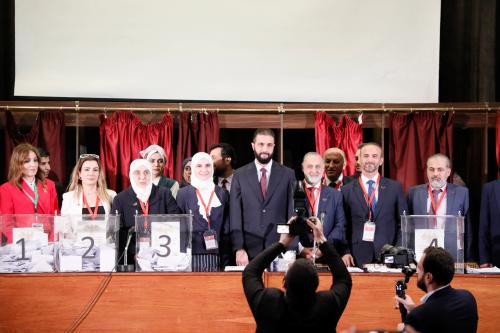The series of energy deals signed during Chinese President Xi Jinping’s visit to Moscow in March 2013 underscore the important role that Chinese capital — primarily in the form of loans from China Development Bank (CDB) –plays in spurring Eurasian economic integration. The nonbinding agreements inked by Chinese and Russian firms have laid the groundwork for the creation of new energy corridors stretching from Russia to China. Indeed, Xi spoke of oil and natural gas pipelines functioning as an artery connecting China and Russia in the 21st century like the tea road over which traders exchanged Chinese tea for Russian furs did in centuries past. The key to substantially expanding energy trade between Russia (one of the world’s largest exporters of oil, natural gas and coal) and China (one of the world’s largest importers of oil and coal and a growing importer of natural gas) is likely to be CDB. The bank not only has the motivation and means to finance the infrastructure needed for the cost-effective delivery of substantially larger volumes of Russian energy to China. It also has an established track record as a driver of regional economic integration.
The latest China-Russia summit set the stage for dramatically increasing the flows of oil, coal and natural gas from Russia to China. First, Rosneft pledged to triple its oil deliveries to China from 300,000 barrels per day (b/d) to as much as one million b/d, which is double the amount of oil Russia exported to China in 2012 and equal to the amount of oil Saudi Arabia, China’s top crude oil supplier, delivered to China last year. Second, China’s Shenhua Group and Russia’s EN+ Group agreed to develop coal resources and related infrastructure in East Siberia and the Russian Far East with an eye to expanding Russian coal exports to China. Third, Gazprom and China National Petroleum Corporation (CNPC) signed a memorandum of understanding for the delivery of 38 bcm of natural gas to China over for 30 years starting in 2018 with the option of expanding deliveries to 60 bcm. A supply contract of this size would help fill the projected gap of 150 bcm between China’s natural gas demand and China’s domestic natural gas supply in 2020 projected by CNPC last year.
CDB features in the oil and coal agreements. The increased volumes of oil that Rosneft pledged to deliver to China reportedly are being used to support a $2 billion loan from CDB. The bank also agreed to extend a $2 billion line of credit to Shenhua Group and EN+ Group for the development of coal resources and infrastructure to transport them to markets.
CDB may also become part of Chinese and Russian efforts to transform their long-discussed dream of a cross-border natural gas pipeline into a reality. This project has a strong logic for both parties; Russia is looking to diversify its markets away from Europe, while China is looking for supplies to meet its growing demand. The principle obstacle to moving this pipeline off the drawing board has been a disagreement over price. Gazprom has long insisted on selling natural gas to China at prices that would provide the same level of profits it earns from sales to Europe, while CNPC has repeatedly refused to pay international prices for Russian gas due to domestic price controls. (The company lost almost $7 billion on natural gas imports in 2012 because it could not pass the full cost of its imports to Chinese customers.) However, a multibillion dollar loan from CDB to Gazprom may resolve the stalemate. Indeed, Gazprom Deputy CEO recently indicated that his company would reconsider its position that its standard terms of deliveries for European customers should apply to China if China were to provide a loan that could be repaid with natural gas exports.
CDB is no stranger to breaking impasses in the China-Russia energy relationship. In 2009, the $25 billion in oil-backed loans that the bank extended to Rosneft and Transneft (the Russian pipeline monopoly) persuaded Moscow to give the green light to the construction of a spur from the East Siberia Pacific Ocean oil pipeline to the Chinese border. The Russians were thrilled with the large volume, low cost and long duration of their loans, and the Chinese were delighted to see Russian oil exports to China jump after the ESPO spur began operation in 2011.
CDB also helped open up energy corridors between Central Asia — one of the least economically integrated regions of the world — and China by bankrolling the construction of the Kazakhstan-China oil pipeline and the Trans-Asia Gas Pipeline. Before these pipelines were built, most of the oil and natural gas produced in Central Asia were shipped to points west. Today, increasing volumes of energy are going to China.
It’s hardly surprising that CDB has emerged as a premier financier of energy development and related infrastructure projects in Eurasia. The bank has a mission to advance the interests of the Chinese leadership as the leadership understands those interests at any given time. In the past, those interests included financing the domestic infrastructure necessary for China’s economic boom. Today, those interests include increasing the flows of energy from Russia and Central Asia to China. CDB also has the means to support those interests. It is China’s largest overseas lender, and its outstanding foreign currency loans – a rough proxy for its international lending – have ballooned from nearly $17 billion in 2005 to $210 billon in 2011.
If history is any guide, CDB’s involvement in the energy deals signed during Xi’s visit to Moscow improves the likelihood that these nonbinding agreements will be finalized. The past decade of negotiations over cross-border pipeline projects indicate that geographic proximity and economic complementariness are necessary –but not sufficient – for the development of a robust bilateral energy relationship. An increase in the flow of Chinese capital across the border for infrastructure construction should expand the flow of energy in the other direction.
The Brookings Institution is committed to quality, independence, and impact.
We are supported by a diverse array of funders. In line with our values and policies, each Brookings publication represents the sole views of its author(s).



Commentary
Money Talks: China-Russia Energy Relations after Xi Jinping’s Visit to Moscow
April 1, 2013